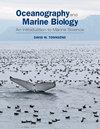Use of diversity estimations in the study of sedimentary benthic communities
1区 生物学
Q1 Agricultural and Biological Sciences
引用次数: 6
Abstract
The soft-bottom benthos covers most of the sea floor. Measurement and analysis of the species richness of these habitats are increasingly needed for studies of community regulation and for providing scientific criteria for the conservation of the ocean bottom at all depths. Diversity measures provide an evolving suite of tools that allow benthic ecologists to meet both basic and applied needs. While species diversity is now considered a fundamental aspect of communities and ecosystems, the measurement of benthic diversity did not become commonplace until the late 1960s. Prior to that communities were characterised by representative species with the implicit assumption that minor species components did not warrant detailed analysis. Use of diversity measures in benthic ecology has largely parallelled studies in other ecosystems with an emphasis upon measures that are informative when applied to large amounts of data with high species numbers. Non-parametric indices such as Simpson's and Shannon's are widely used along with simple species richness. Logseries and log-normal distributions have been advocated as general neutral models but receive less use. Current research is especially focused upon extrapolation of unsampled species richness and diversity relationships across spatial scales. Major contributions from benthic ecology include the rarefaction of samples to a uniform size, the development of indices that include phylogenetic relationships in diversity estimation and the extrapolation of full species richness from observed values. In meeting scientific and societal needs, benthic ecologists must apply methods that are insightful yet can be simply explained within the resource-policy arena.多样性估算在沉积底栖生物群落研究中的应用
软底底生物覆盖了大部分海底。越来越需要测量和分析这些生境的物种丰富度,以便研究群落调节和为保护所有深度的海底提供科学标准。多样性测量提供了一套不断发展的工具,使底栖生态学家能够满足基本和应用需求。虽然物种多样性现在被认为是群落和生态系统的一个基本方面,但底栖生物多样性的测量直到20世纪60年代末才变得普遍。在此之前,群落以代表性物种为特征,隐含的假设是,较小的物种成分不值得详细分析。在底栖生物生态学中使用多样性措施在很大程度上与其他生态系统的研究相平行,重点是在应用于具有高物种数量的大量数据时提供信息的措施。非参数指数如Simpson’s和Shannon’s与简单的物种丰富度一起被广泛使用。对数序列和对数正态分布被提倡为一般的中性模型,但很少使用。目前的研究主要集中在非采样物种丰富度和多样性跨空间尺度关系的外推。底栖生物生态学的主要贡献包括将样本稀疏到统一大小,开发了包括多样性估计中的系统发育关系在内的指数,并从观测值推断出全部物种丰富度。为了满足科学和社会的需求,底栖生态学家必须应用有见地但又能在资源政策领域内简单解释的方法。
本文章由计算机程序翻译,如有差异,请以英文原文为准。
求助全文
约1分钟内获得全文
求助全文
来源期刊
自引率
0.00%
发文量
0
期刊介绍:
With increasing interest in the field and its relevance in global environmental issues, Oceanography and Marine Biology: An Annual Review provides authoritative reviews that summarize results of recent research in basic areas of marine research, exploring topics of special and topical importance while adding to new areas as they arise

 求助内容:
求助内容: 应助结果提醒方式:
应助结果提醒方式:


